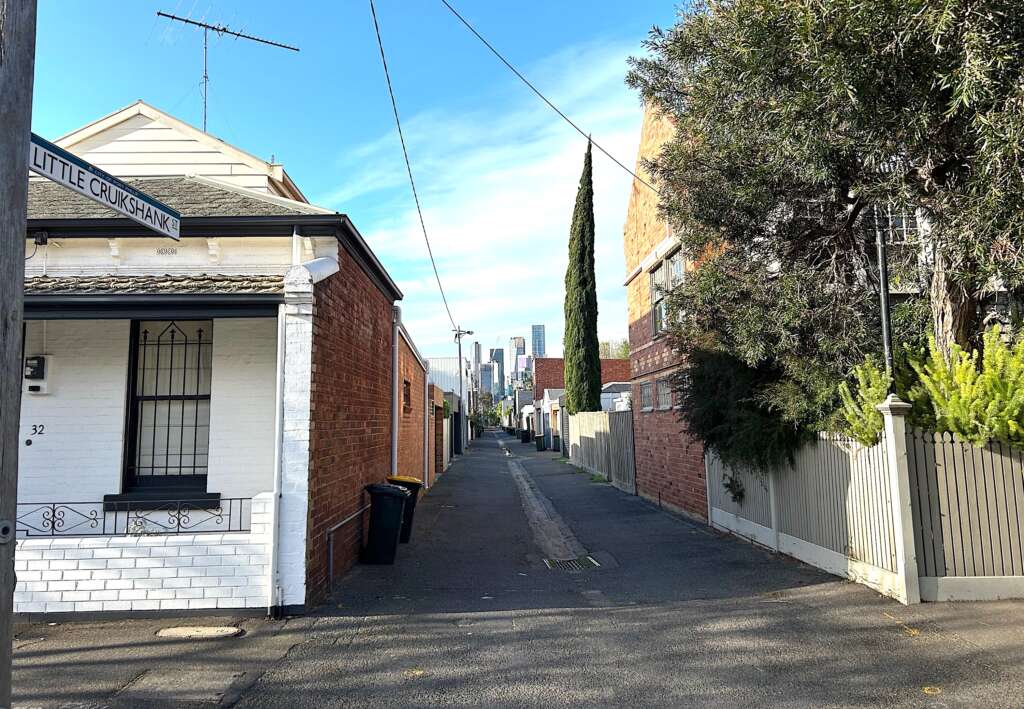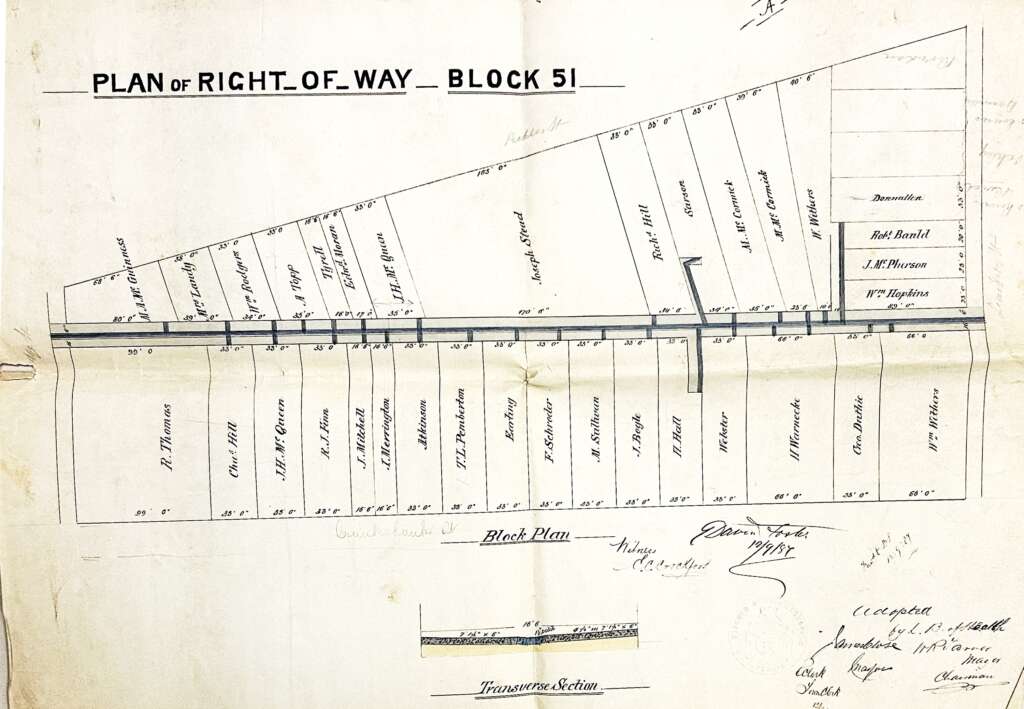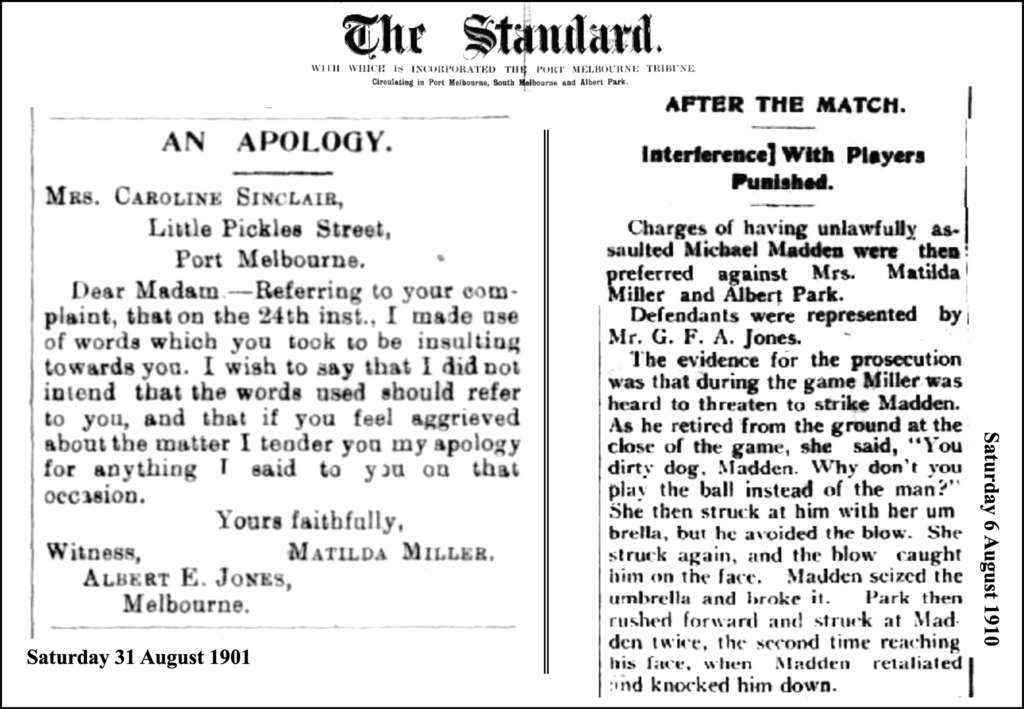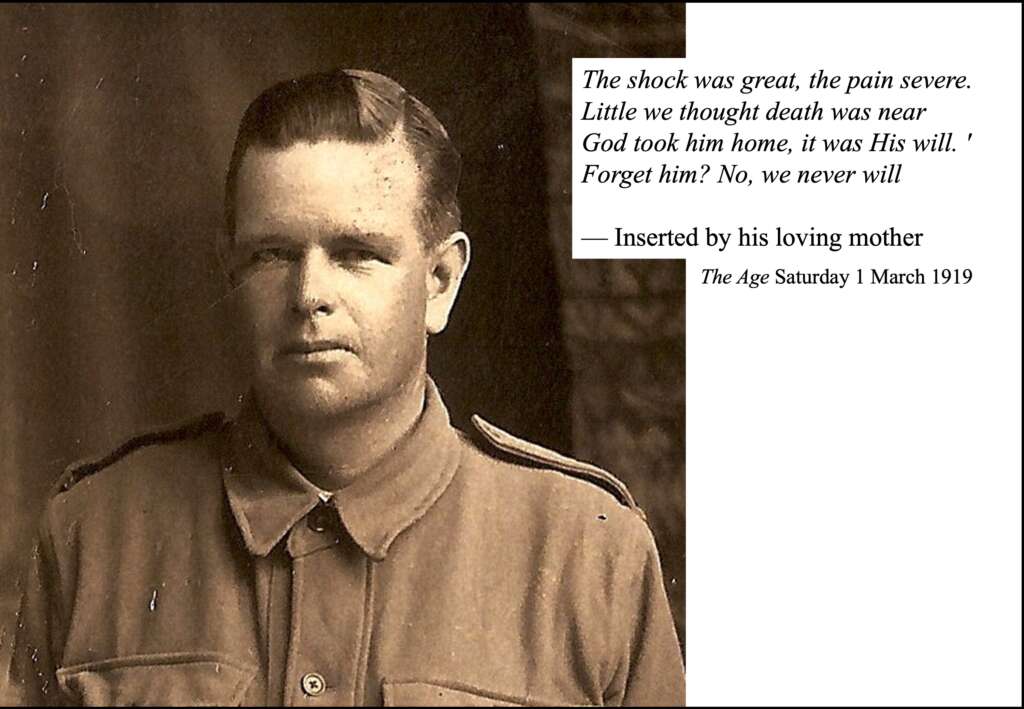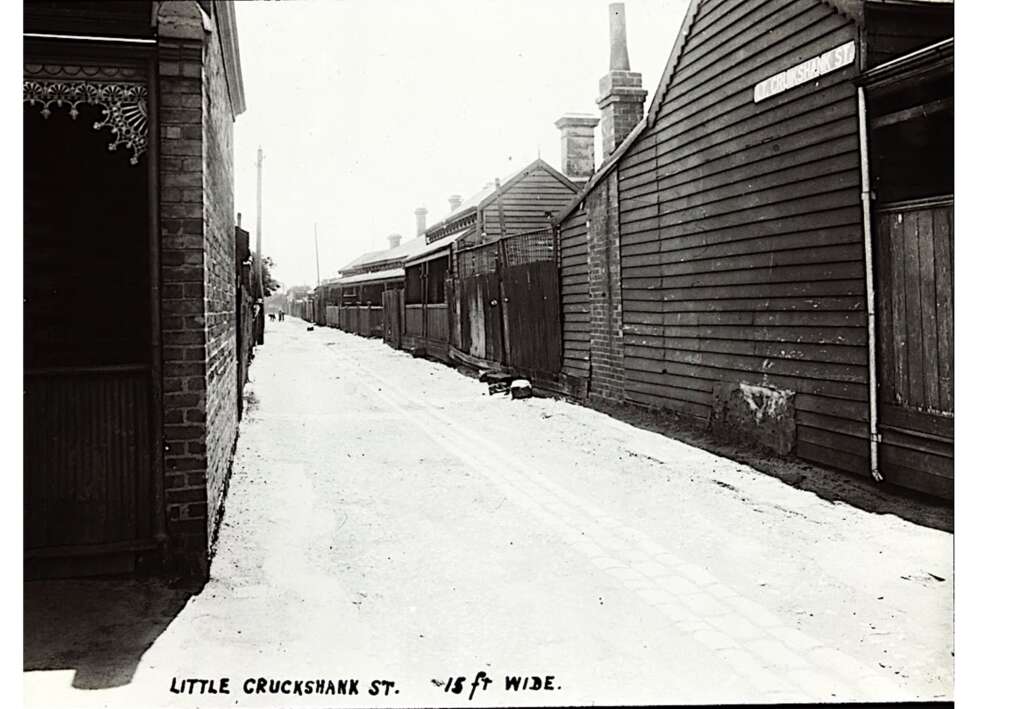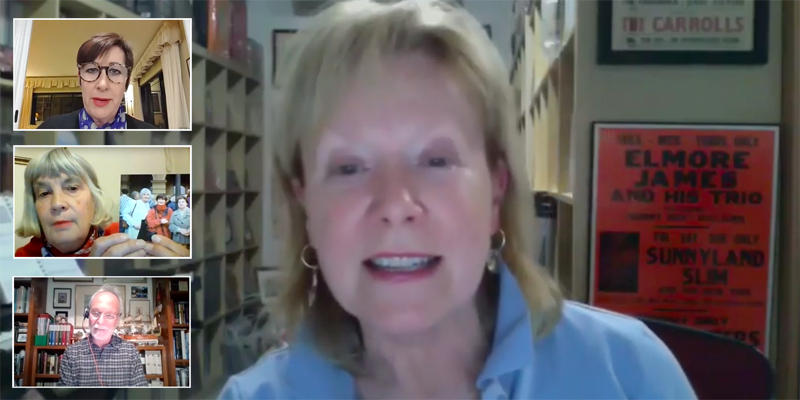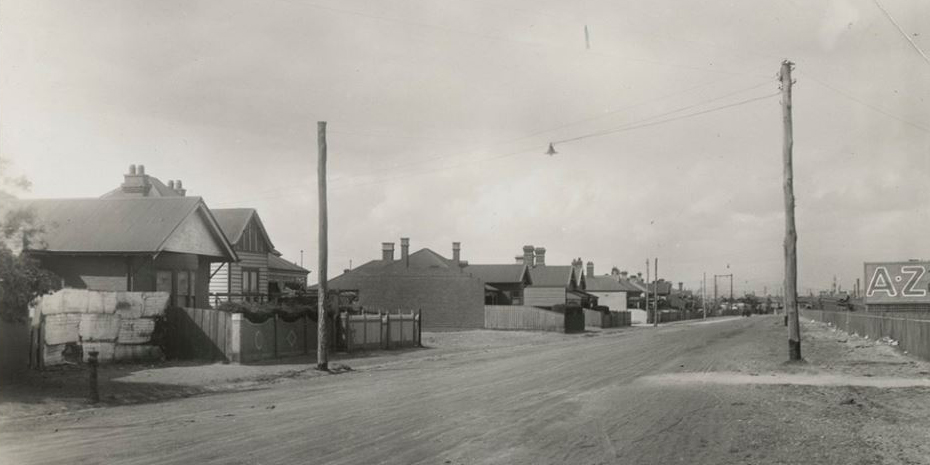Little Cruikshank (aka Little Pickles) Street
by David F Radcliffe
Little Cruickshank Street runs between Liardet and Bridge Streets, providing access to the rear of properties on Cruickshank and Pickles Streets, Port Melbourne. This right-of-way was formed when the Crown Land on the eastern shore of the Sandridge Lagoon was surveyed and sold in the 1870s.
It was never intended to be a street address. However, as happened across Melbourne during the 1880s boom, building allotments were aggressively subdivided and small cottages were erected in back lanes including this one. During these boom years, the Council improved sanitation by paving and draining rights-of-way across the Borough paid for by the property owners. Below is the 1887 plan for the drainage works on Little Cruikshank Street.
Like Melville Street, this narrow laneway suffered from an identity crisis. Was it Little Cruickshank Street or Little Pickles Street? The Council valuer always recorded it as Little Cruickshank. Conversely, the Sands and McDougall Street Directory listed it as Little Pickles between 1890 and 1908.[i] In 1895, a prominent Port Melbourne real estate agent advertised it as Little Pickles Street (insert below).[ii] However, the 1894 MMBW map shows it as Little Cruickshank (orange) and the right-of-way on the South Melbourne side of Pickles Street as Little Pickles (green). Still, in 1904, the Port Melbourne surveyor described it as Little Pickles Street.[iii]
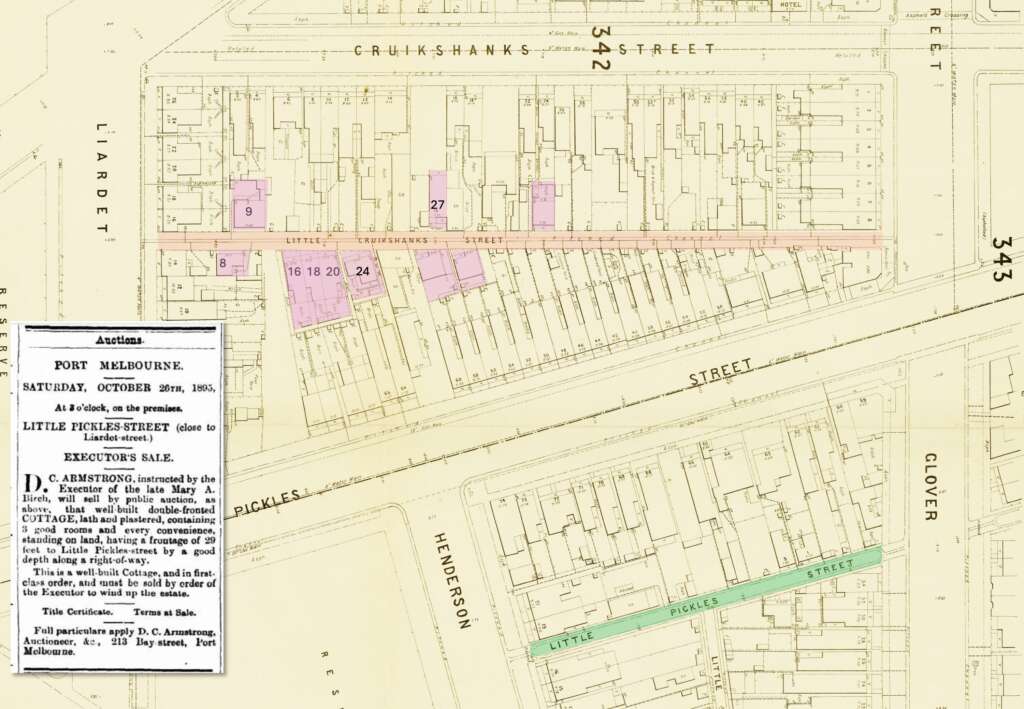
In the early 1890s, at least ten weatherboard cottages fronted onto Little Cruickshank (pink). These were mostly rentals, with well-known publican Matthew McCormack of the Cricketer’s Arms owning numbers 16, 18 and 20 on the eastern side. Beach Street pawnbroker Frances Warren owned numbers 8, 9 and 27 on the western side, just a small fraction of his enormous property portfolio.
Disputes between neighbours are nothing new, but public apologies are a thing of the past. In August 1901, Mrs Matilda Miller of no. 24 published the following apology to Mrs Caroline Sinclair at no. 8.[iv] As the witness cited in the letter, Albert Jones, was her solicitor, it seems unlikely this apology was volunteered. The street name in the apology is Little Pickles, so the inhabitants seemed to side with Sands and McDougall about where they resided.
Matilda Miller may have had a short fuse. A few years later she was found guilty of assaulting Essendon player, Mick Madden, following a game against Port and was fined 16 shillings. Her co-defendant was the delightfully named Albert Park.
During the game, Matilda threatened to strike Madden. As he came off the ground she yelled “You dirty dog Madden, why didn’t you play the ball instead of the man?”. She tried to strike Madden with her umbrella, but he avoided the blow. She tried again, this time hitting Madden in the face. He grabbed the umbrella and broke it. Albert Park then hit Madden several times but was knocked down by him. Matilda Miller said in court she had no intention of striking Madden but did admit to calling him a coward.[v] Ironically, the court dismissed a charge against Madden of assaulting Port’s Charlie Haigbloom during the game, the very incident that triggered Matilda to wield her umbrella.[vi] Essendon won 2-14-26 to Port’s 3-4-22.[vii]
Families frequently came and went on Little Cruikshank Street. One who stayed for over twenty years was Isabella Norman. Widowed in 1898, when her stevedore husband Andrew died after being kicked by a horse, Isabella was left to raise seven children. The family moved into no. 9 Little Cruikshank Street in 1904. Her son Ollie married in 1907, moved to South Melbourne and began to raise a family. In 1915, he enlisted and travelled via Egypt to the European battlefields. He was wounded in action in France but survived the war. In a cruel twist, Ollie succumbed to influenza (Spanish Flu) in England in 1919. His mother Isabella expressed the family’s shock and pain at this unexpected news (insert below).
Isabella Norman moved out of Little Cruikshank Street in 1925. Around that time, narrow laneways across Melbourne containing housing of questionable quality came under the scrutiny of Oswald Barnett and other social reformers. They photographed slum conditions in many inner suburbs, including Port Melbourne. The following picture, taken between 1920 and 1930, was part of a lantern slide collection of prominent Melbourne architect and planner Frank Heath, who co-authored We Must Go On: A Study in Planned Reconstruction and Housing with Oswald Barnett.
Many of the cottages in Little Cruikshank Street were occupied through the 1940s, but only a couple survived into the 1950s and 60s. Curiously, one property with a Little Cruikshank Street address remains.
Doubtless, there is more to unearth about the families who once lived on this narrow laneway. In the case of the Norman family, their story is published here.
[i] During these years Sands and McDougall listed a Little Pickles Street in both Port Melbourne and South Melbourne.
[ii] 1895 ‘Advertising’, Standard (Port Melbourne, Vic. : 1884 – 1914), 12 October, p. 2. , viewed 01 Oct 2024, http://nla.gov.au/nla.news-article165168354
[iii] 1904 ‘REPORTS OF COMMITTEES.’, Standard (Port Melbourne, Vic. : 1884 – 1914), 12 November, p. 3. , viewed 01 Oct 2024, http://nla.gov.au/nla.news-article164437848
[iv] 1901 ‘Advertising’, Standard (Port Melbourne, Vic. : 1884 – 1914), 31 August, p. 2. , viewed 01 Oct 2024, http://nla.gov.au/nla.news-article164942968
[v] 1910 ‘AFTER THE MATCH.’, Standard (Port Melbourne, Vic. : 1884 – 1914), 6 August, p. 2. , viewed 01 Oct 2024, http://nla.gov.au/nla.news-article164954995
[vi] 1910 ‘PORT MELBOURNE MATCH.’, The Argus (Melbourne, Vic. : 1848 – 1957), 5 August, p. 9. , viewed 01 Oct 2024, http://nla.gov.au/nla.news-article10449892
[vii] 1910 ‘ASSOCIATION’, The Herald (Melbourne, Vic. : 1861 – 1954), 16 July, p. 6. , viewed 01 Oct 2024, http://nla.gov.au/nla.news-article242087000

